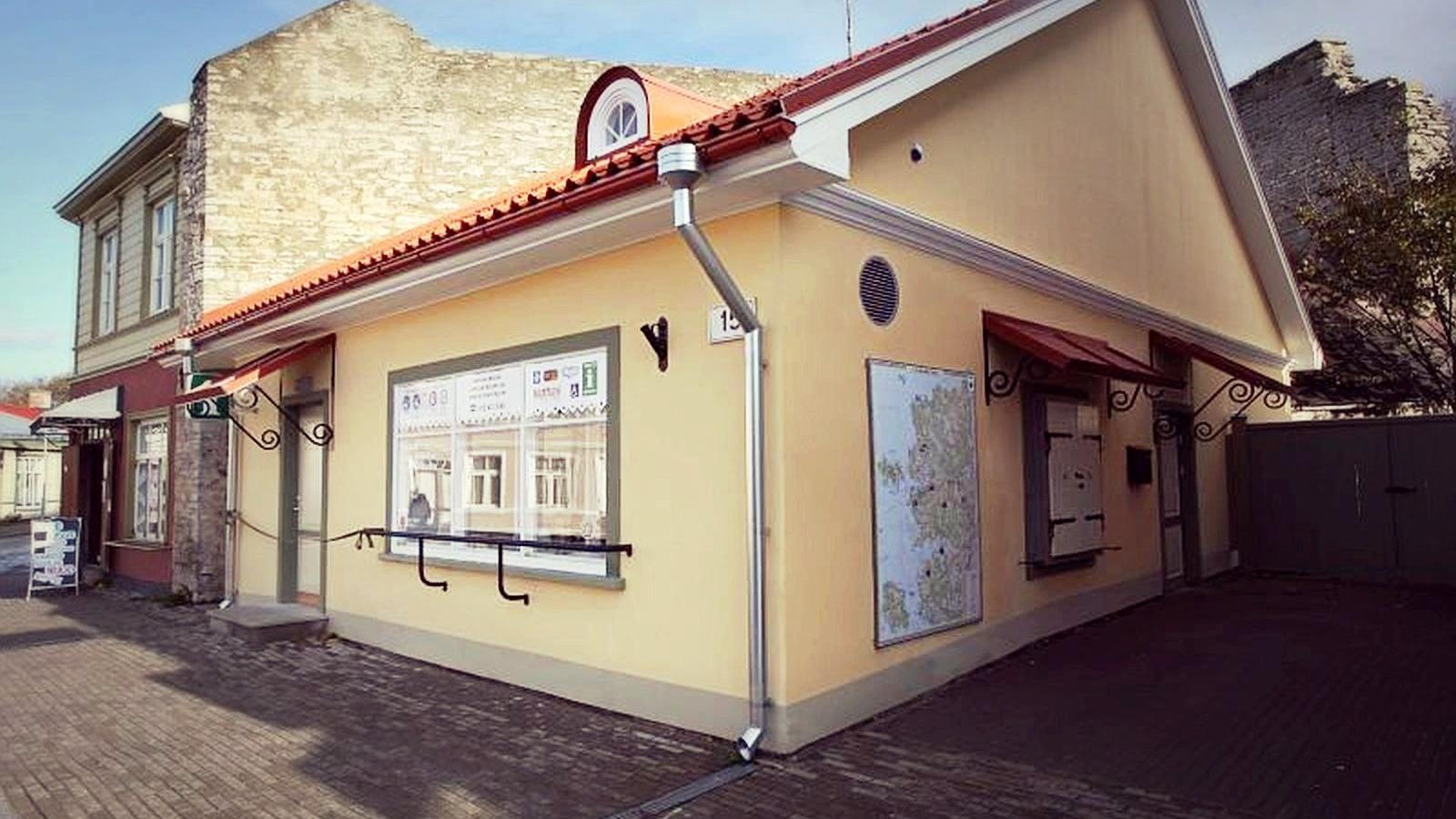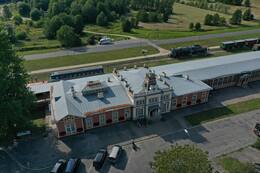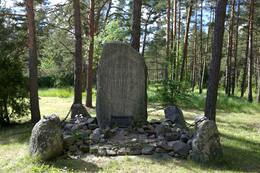Karinis paveldas palei Geležinę uždangą automobiliu iš Talino į Liepoją
Diena 2.
9 km
Haapsalu–Rohuküla–ferry to Vormsi
Praktinė informacija
- Driving distance Haapsalu–Rohuküla harbour: ~ 9 km
- Opening hours and ticket information for Railway and Communication Museum in Haapsalu salm.ee. Guided tours should be booked in advance.
- It is recommended to book tickets for the ferry from Rohuküla harbour to Vormsi in advance. Bookings and timetables veeteed.com. It is possible to leave cars in Rohukula harbour and explore Vormsi Island on foot or by bicycle.
- Overnight stay is possible in Vormsi or you can come back to Haapsalu.
Lankytinos vietos
Haapsalu Tourist Information Centre
Hapsalu geležinkelių ir susisiekimo muziejus
Šis muziejus įsikūręs XX a. pradžioje pastatytoje geležinkelio stotyje, jungiančioje su Hapsalu kurortu.
1997 m. atidarytas muziejus pristato pusantro amžiaus Estijos geležinkelių ir komunikacijos priemonių raidą. Be nebenaudojamų lokomotyvų, muziejuje eksponuojamas malonus stoties viršininkas ir „Ericsson Skeleton Type“ telefonas, o lankytojai kviečiami į stoties paštą.
Lauko parodoje taip pat eksponuojamas Antrojo pasaulinio karo garvežys 52 3368.
Garvežys Nr. 52 3368, iš pradžių pažymėtas numeriu 16494, buvo baigtas gaminti 1943 m. balandžio mėn. Miunchene, Krauss-Maffei gamykloje, o vėliau perkeltas į Austriją, Filacho divizijos Bruck an der Mur depo. Vengrijos valstybiniai geležinkeliai (MAV) išsinuomojo lokomotyvą, o 1945 m. birželio 7 d. jį užgrobė Raudonoji armija. Pasikeitus Vengrijos ir Rumunijos sienai, lokomotyvas Nr. 52 3368 buvo perduotas Rumunijos geležinkeliui (CFR). 1950 m. rugpjūtį CFR Jasų gamykloje lokomotyvas buvo perdarytas į plačiojo geležinkelio (5 pėdų) ir perduotas Sovietų Sąjungai, kur nuo 1950 m. spalio iki 1956 m. dirbo Odesos geležinkelio Kotovsko ir Vapniarkos depe. Po to SSRS susisiekimo ministerija jį laikė strateginiame rezerve. 1957 m. rugpjūčio 26 d. į Valgos lokomotyvų bazę atvyko garvežys TE-3368 (ТЭ-3368, 52 klasės garvežys 1952 m. buvo pervadintas į TE). Ten garvežys gavo kitą tenderį (vadinamąjį „Wannentender“), 1943 m. pagamintą „Borsig Works“ gamykloje Berlyne ir anksčiau priklausiusį garvežiui TE-450. Jis galėjo gabenti 32 m3 vandens ir 10 tonų kuro. Garvežys Valgoje (nuo 1961 iki 1968 m. trumpai – Tartu) stovėjo iki bazės uždarymo 1997 m. Nuo 1950 iki 1985 m. jo, kaip plačiojo geležinkelio lokomotyvo, rida buvo 463 216 km. 1998 m. gegužės 8 d. garvežys buvo pristatytas į Hapsalu, kad būtų eksponuojamas Geležinkelio muziejuje.
52 klasės karo lokomotyvas buvo skubiai suprojektuotas 1942 m. birželį Reicho ginkluotės ir karo gamybos ministerijos prašymu, remiantis 50 klasės lokomotyvo pavyzdžiu. 2-10-0 tipo variklis turėjo apie 1500 AG galią ir maksimalų 80 km/h greitį. Jis turėjo supaprastintą ir lengvą konstrukciją (15 tonų ašies apkrova), o numatytas eksploatavimo laikas buvo 5 metai. Nuo 1942 iki 1945 m. 14 gamyklų visoje Europoje buvo pagaminta iš viso 6295 šios klasės lokomotyvai. Po Antrojo pasaulinio karo 52 klasės lokomotyvai paplito po visą Europą – nuo Norvegijos iki Turkijos ir nuo Belgijos iki Sovietų Sąjungos. SSRS buvo daugiau nei 2000 lokomotyvų – tikslus skaičius nežinomas, nes lokomotyvai buvo pavaldūs įvairioms institucijoms, įskaitant saugumo tarnybas. Estijoje 52 klasės garo lokomotyvai standartinio vėžės (1435 mm) linijomis pirmą kartą pradėjo važiuoti 1943–1944 m. Nuo 1953 m., kai Estijos krovininiame eisme jie pakeitė amerikietiškus ŠA klasės karo lokomotyvus („Sharik“), čia buvo 138 TE (52) klasės pakeisto gabarito lokomotyvai. Iki 1991 m. Estijoje buvo likęs tik vienas – TE-3368.
Hullo pasienio postas
Šis postas yra Hullo miestelyje, Vormsi saloje. Tai buvo paskutinis Vormsi saloje pastatytas postas, baigtas statyti 1985 m. pavasarį. Būdingas sovietmečiu vyravusiai sumaiščiai, Tolimosios Šiaurės postas buvo statomas pagal standartinius statybos planus: didžioji komplekso dalis yra po vienu stogu. Jį pastatė netrukus iš tarnybos atleisti šauktiniai, kurie dažniausiai ir buvo naudojami tokiai veiklai. Užbaigtame pastate buvo įsikūręs 106-ojo Raudonosios vėliavos pasienio apsaugos būrio 17-asis pasienio postas. Tačiau jie juo ilgai nesinaudojo, nes 1992 m. pabaigoje jį perėmė Estijos pasienio apsauga. Poste yra pilno dydžio krepšinio aikštelė ir kino teatras su balkonais. Jis taip pat unikalus tuo, kad sargybos postas yra ant katilinės kamino, o aplink jį vingiuoja laiptai. Vidaus reikalų ministerija turtą padalijo ir privatizavo 2008 m. Dalis buvusio posto teritorijos vėliau buvo paversta gyvenamąja žeme.
Vormsio Laisvės kovų paminklas
Šis paminklas yra 2,5 metro aukščio granito riedulys, kurio priekinė pusė yra poliruota. Jis stovi prie vakarinių Hullo bažnyčios šventoriaus vartų, po pušimis. Paminklas buvo atidengtas 1929 m., o data iškalta uoloje. Tai vienas iš nedaugelio Nepriklausomybės karo paminklų, išlikusių po sovietų okupacijos. Galbūt padėjo tai, kad paminklas yra švedų kalba ir jame nėra įrašytų metų 1918–1920. Ant paminklo užrašyta: „Salos gyventojai pastatė šią uolą 1929 m. laisvės kovotojų garbei“. Jis pastatytas ant akmeninio pagrindo. Paminklą aptver akmeniniai stulpai su grandinėmis.
Vietos pavalgyti
Rumpo Mäe Farm
In Haapsalu www.visithaapsalu.com







